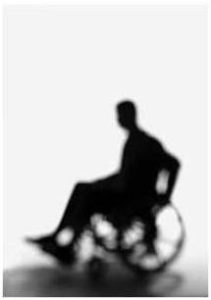Secondary Health Conditions
Secondary health conditions present challenges to health maintenance for people with spinal cord injury (SCI). Common secondary conditions associated with SCI include:
| Autonomic dysreflexia
Bladder dysfunction (e.g., urinary tract infections)
Bone complications (e.g., fractures)
Bowel dysfunction (e.g., constipation)
Pain (neuropathic, musckuloskeletal, visceral)
Pressure ulcers
Respiratory complications
Sexual dysfunction
Spasticity |
 |
| Given that persons with SCI now have comparable life-spans to that of the able-bodied (AB) population, they may also experience typical age-related and ‘normative’ health problems such as cardiovascular disease, diabetes, obesity, fatigue, etc. As a result of these health problems, it is not surprising that people with SCI have greater rates of health care utilization and re-hospitalization compared to the AB population. In addition to the economic burden, secondary health conditions impact on the quality of life of individuals with SCI in multiple ways. |
SCI HEALTH RESOURCES
Spinal Cord Essentials – is a patient education initiative which aims help people through rehabilitation following SCI. Below are the downloadable PDFs of the SCI handouts.
Key References:
Noreau L, Proulx P, Gagnon L, Drolet M, Laramee MT. Secondary impairments after spinal cord injury: a population-based study. Am J Phys Med Rehabil 2000;79:526-35.
Bloemen-Vrencken J, Post M, Hendriks J, De Reus E, De Witte L. Health problems of persons with spinal cord injury living in the Netherlands. Disabil Rehabil 2005;27:1381-9.
Hitzig SL, Campbell KA, McGillivray CF, Boschen KA, Craven BC. Understanding Age Effects Associated with Changes in Secondary Health Conditions in a Canadian Spinal Cord Injury Cohort. Spinal Cord 2010;48:330-5.
Dryden DM, Saunders LD, Jacobs P, Schopflocher DP, Rowe BH, May LA, Yiannakoulias N, Svenson LW, Voaklander DC. Direct health care costs after traumatic spinal cord injury. J Trauma 2005;59:443-9
Dryden DM, Saunders LD, Rowe BH, May LA, Yiannakoulias N, Svenson LW, Schopflocher DP, Voaklander DC. Utilization of Health Services Following Spinal Cord Injury: a 6-Year Follow-up Study. Spinal Cord 2004;42:513-25
Guilcher SJ, Munce SE, Couris CM, Fung K, Craven BC, Verrier M, Jaglal SB. Health care utilization in non-traumatic and traumatic spinal cord injury: a population-based study. Spinal Cord. 2010 Jan;48:45-50.
Jaglal SB, Munce SE, Guilcher SJ, Couris CM, Fung K, Craven BC, Verrier M. Health system factors associated with rehospitalizations after traumatic spinal cord injury: a population-based study. Spinal Cord. 2009;47:604-9.
Donnelly C, McColl MA, Charlifue S, Glass C, O’Brien P, Savic G, Smith K. Utilization, access and satisfaction with primary care among people with spinal cord injuries: a comparison of three countries. Spinal Cord 2007;45:25-36.
Hitzig SL, Tonack M, Campbell KA, McGillivray CF, Boschen KA, Richards K et al. Secondary health complications in an aging Canadian spinal cord injury sample. Am J Phys Med Rehabil 2008;87:545-55.

